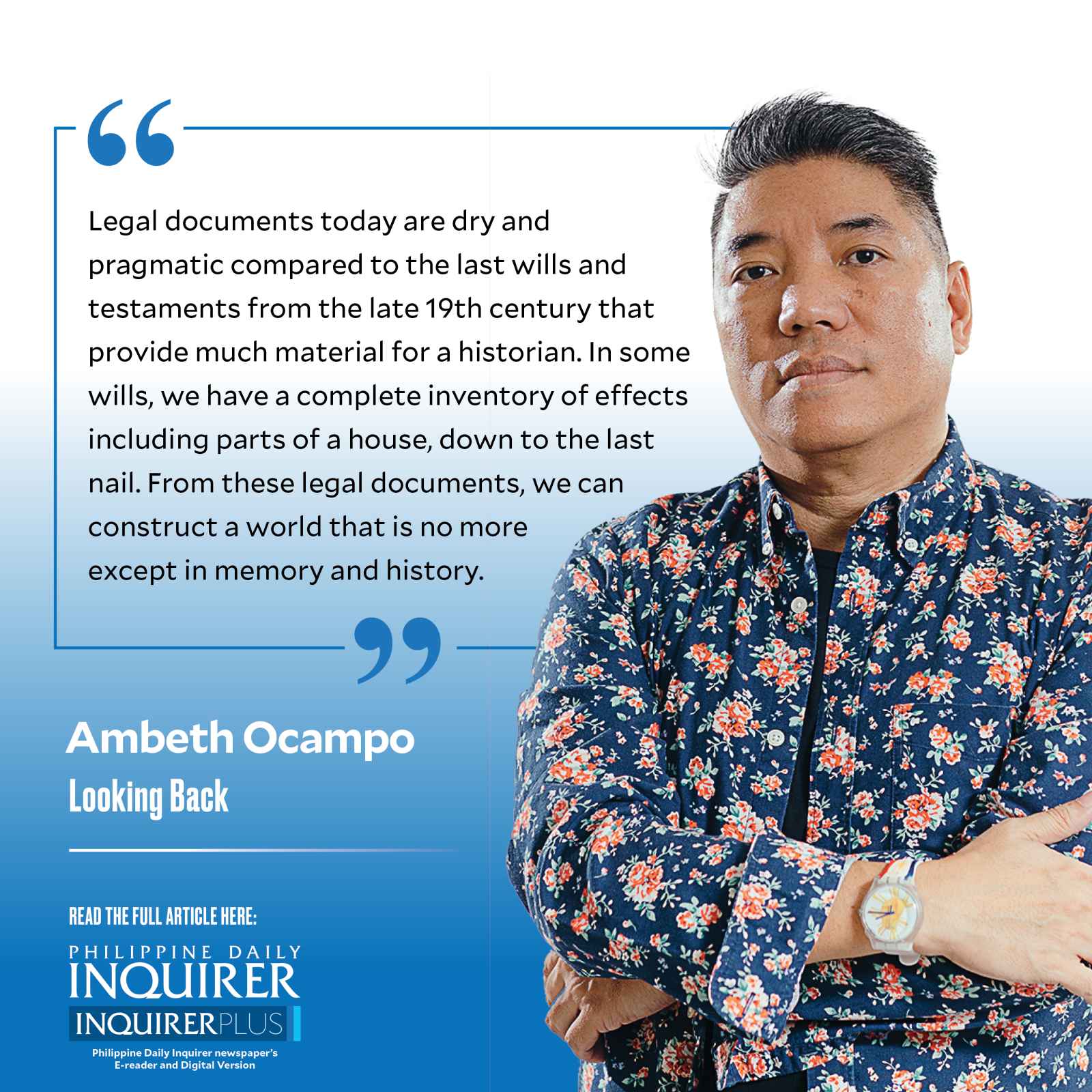History from last wills and testaments

After watching “GomBurZa,” I reviewed the secondary literature that must have been used as the basis for the screenplay. Of course, the most numerous and authoritative were written by the Jesuit historian Fr. John Schumacher SJ, who unfortunately did not live to see or guide the production of the film. Curiosity being second-nature to historians, I not only re-read the secondary literature, but also traced back the sources indicated in footnotes and the bibliographies.
In the process of this review, one of the leads that piqued my curiosity was a note from the anti-Filipino José Montero y Vidal who claimed that Fr. Mariano Gomes left part of his estate, P200,000 worth, to a natural son.
Article continues after this advertisementLast wills and testaments are mostly pragmatic legal documents that outline the disposition of the deceased’s assets. Only two wills have been documented: that of Gomes and Fr. José Burgos. If we are to go by the movie, Fr. Jacinto Zamora suffered a nervous breakdown and was not in a position to execute a will. The text of Burgos’ will is translated from the original Spanish by Gregorio Zaide, who received a copy in 1932 from the historian Manuel Artigas y Cuerva.
Since we do not have a copy of the signed original, I am skeptical regarding the authenticity of this Burgos will. Father Schumacher validated some documents—unsigned but attributed to Burgos—and discarded others. Worse, there is a whole archive of fake Burgos documents created by Jose Marco, some of which might have been passed on to Artigas. For whatever it’s worth, the so-called Burgos will indicated: his age, 35, at the time of the writing; named his parents as Tiburcio Burgos and Florencia Garcia; and identified Vigan, Ilocos Sur, as his place of birth.
The will consists of five clauses: first, Burgos commends his soul to God; second, he bequeathes his alms to pious foundations [no amount supplied]; third, he designates his sister Antonia as the “only heir of all [his] property;” fourth, he also designates Antonia as executor of his estate, and fifth, he revokes any and all testaments previous to this one that he signed on Feb. 16, 1872, in the presence of four witnesses.
Article continues after this advertisementThe will of Mariano Gomes was found serendipitously by Dr. Luciano P.R. Santiago in the Philippine National Archives while he was researching something else. A pity that Dr. Santiago wrote a narrative essay on the will, but did not provide a transcription of the original as an appendix. Father Gomes’ will is six handwritten pages long, with 18 clauses that provide not just the legal requirements for a will but some personal information. From the document, the following biographical information was culled: Mariano Gomes de los Angeles was born in Santa Cruz, Manila, and was “72 and a half years old” at the time he signed the will and was executed by garrote.
In the first clause, Gomes commends his soul to God and asks that his “remains be buried in the cemetery of my parish” (Bacoor, where he served for almost 50 years). The second clause identified and acknowledged his “nephew” Modesto de la Torre as his natural son. De la Torre was married with six children and was residing in Bacoor. It also named his parents as Alejandro Francisco Gomes and Martina Custodia. He had three sisters and one brother, as well as two nephews who were also priests: Manuel Trias and Feliciano Gomes, who was arrested and imprisoned with him in Fort Santiago. Gomes left provisions for any of his family who would take up religious life, and forgave any debts owed him by family members. In the will, Gomes details his earthly possessions as arranged in his home: two aparadors, a large round table with drawers, a writing desk, and bookcases. Some of his documents were stored in empty cigar boxes, while receipts were filed in used raisin containers. He also indicated where sacks of coins were kept.
A true custodian of parish money, Gomes ordered that a full accounting of parish funds be made, with any discrepancy to be paid out from his estate. He had kept the funds in coins because he was afraid to bring them to Manila physically and court robbers. The coins were never found and were presumably taken by government authorities, who ransacked his home after his arrest in search of evidence that would incriminate or associate him with the 1872 Cavite Mutiny.
Contrary to Montero y Vidal’s claim that Gomes had left an estate worth P200,000, all the priest owned at the time of his execution were: a house for rent, 13 salt beds, and another salt bed attached to a communal one. From this document, it is clear that Father Gomes was both a prime mover and investor in the Bacoor salt industry.
Legal documents today are dry and pragmatic compared to the last wills and testaments from the late 19th century that provide much material for a historian. In some wills, we have a complete inventory of effects including parts of a house, down to the last nail. From these legal documents, we can construct a world that is no more except in memory and history.
—————-
Comments are welcome at aocampo@ateneo.edu
















